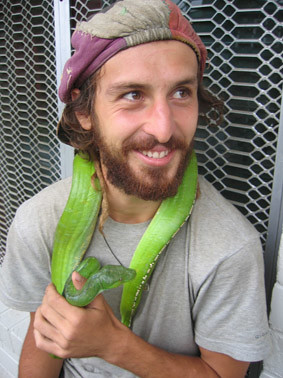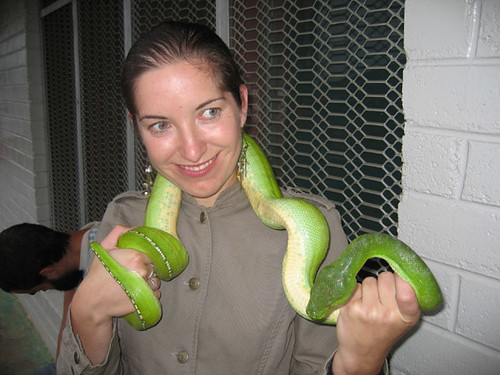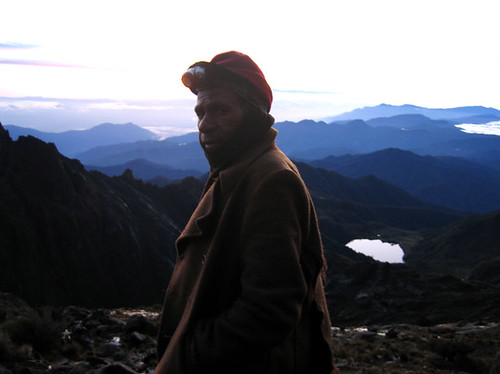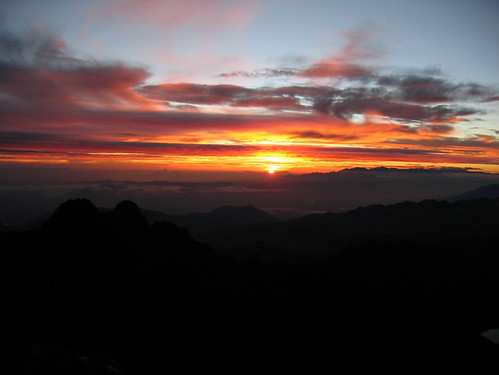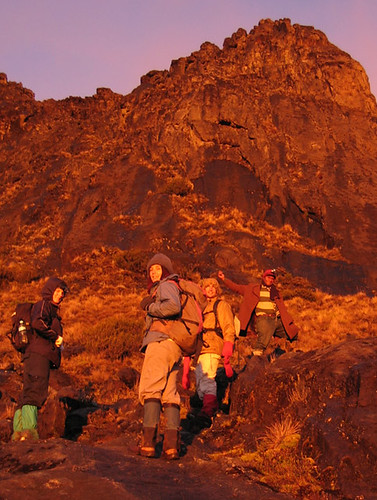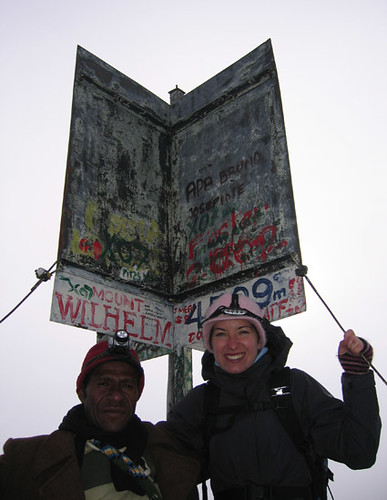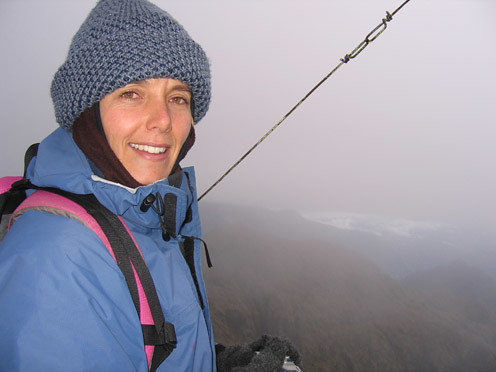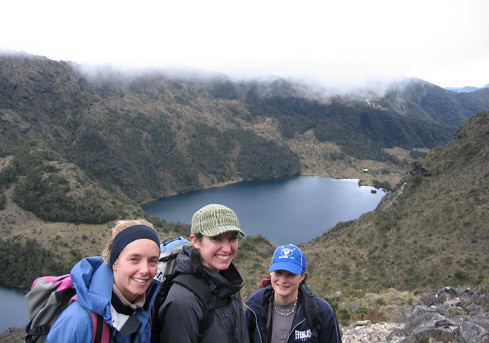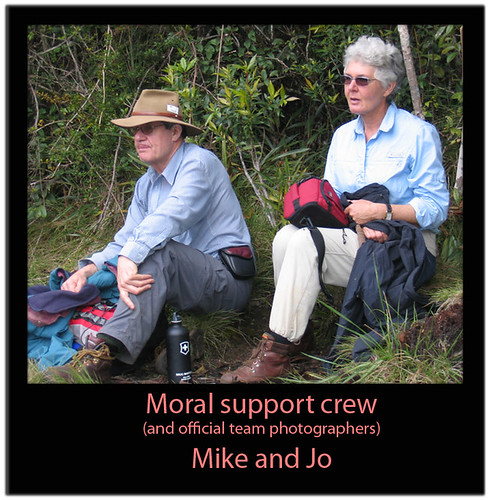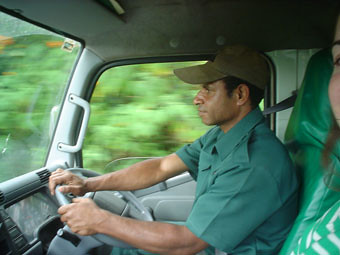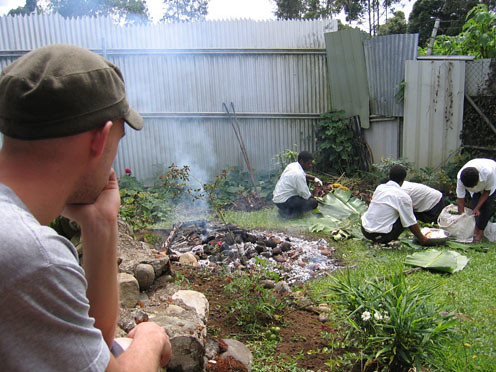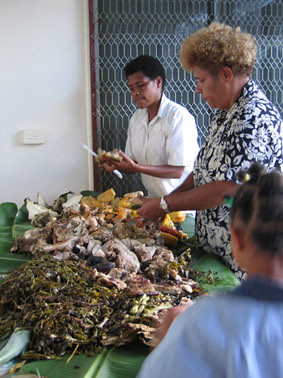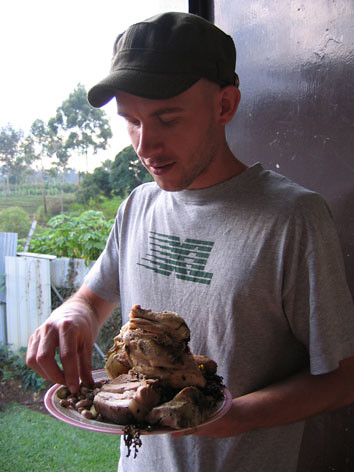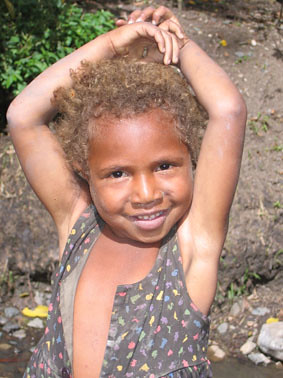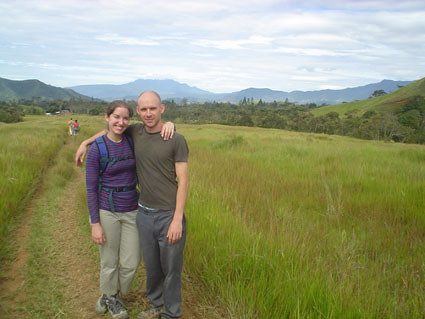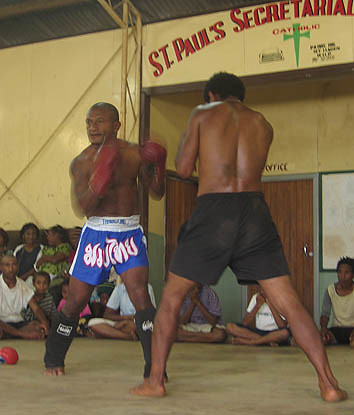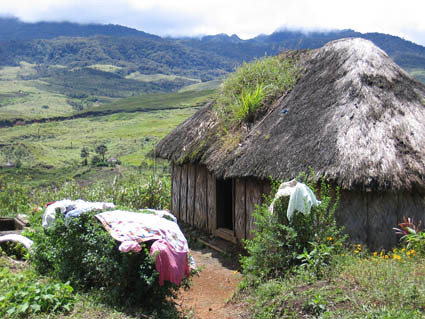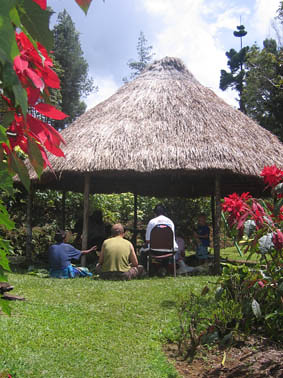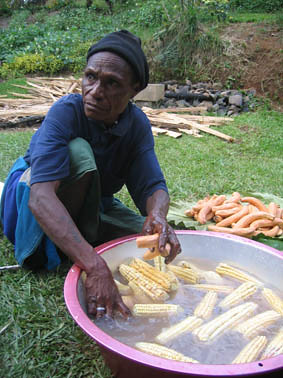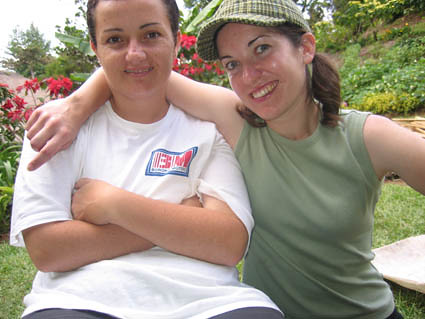Hagen Show
And now, a word from our sponsor...

Well, it was rather remiss of me to blog about Mt Wilhelm and neglect our other major outing in August - Mt Hagen’s biggest annual event, the Hagen Show. The Wilhelm team actually started the Highland adventures up here in the Western Highlands capital, where I finally got to show some friends this is not the dangerous place it has the reputation for being. And the highlight of the Hagen stay would have to be our biggest annual cultural festival.
So before Lyn and Stan, Kate and Alex, Soli, Anthony, Camille, Hu and his parents made the trek up from their respective parts of PNG and Australia, I organised us some show tickets and prepared for the hordes to arrive. We were a pretty funny sight crammed into either mine or Dylan’s little kitchen to share dinner of an evening that weekend.
The show ran for two days – Saturday 19th and Sunday 20th August. On Saturday morning at about 9 o’clock, we jumped in the back of a couple of 4WDs and headed down to the showgrounds for some serious singsing entertainment.
A singsing is a major event in the Highlands and a traditional means of expression through dance, song and decoration (think Aboriginal corroboree). The style in which each group exhibits is individual to their clan and while it would take many visits to many parts of the country to normally see these groups in full swing, the Hagen Show brings them all together at one major oval in a fabulous outdoor spectacular. The groups take days to prepare their bilas (decorative costumes). On the day, they grease themselves up with pig fat, paint their faces up and parade around the oval in song as part of a massive competition. Prize money and prestige are the main drawcards for participants. The Huli Wigmen are particularly well known for the attention they give to their hairpieces and are the major drawcard for photographers.
It felt a bit strange for us, though. Rather exploitative. We felt very much like tourists running around with our cameras amongst the other international visitors. There were plenty of beefy looking lenses, but few photographic credentials, we suspect. And to be honest, it was pretty hard to take a picture without copping an American or a section of cyclone fencing in the background.
But we did pick up some nice souvenirs.
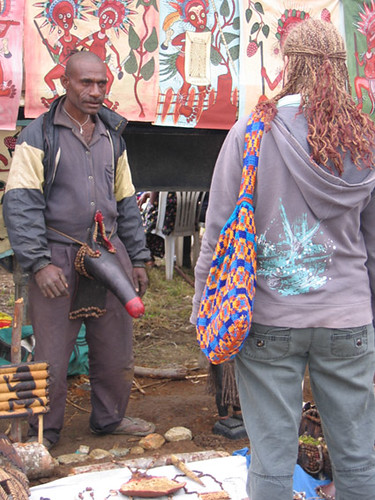
There were plenty of gourds (yes, Johnboy, I bought one – but not the one being modeled in the picture above) and tons of options when it came to buying musical instruments. I bought two bamboo flutes, a clay flute and a juice harp on that day alone.
So, now for some more pics...
The famous Asaro Mudmen
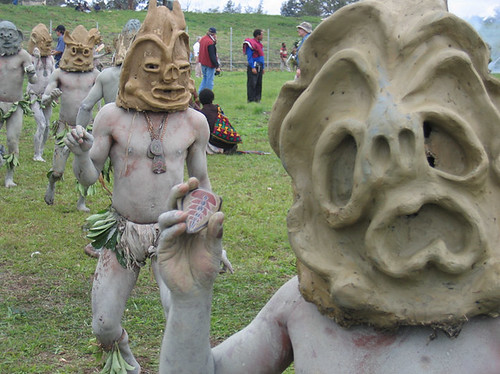
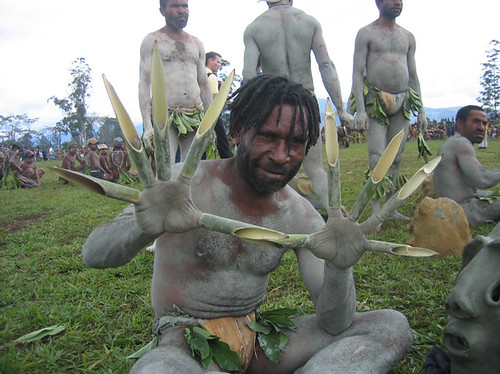
This young Mudman tried to sell me his little clay head
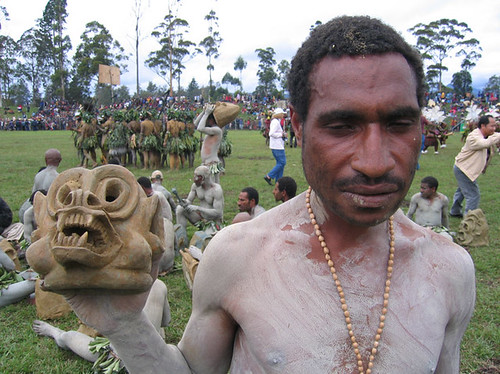
I asked him how much and he said five kina (about A$2.10). I told him in Pidgin that he should go put the price up to 30K and sell it to an American. He ran off grinning.
The Engan women
(...possibly the most beautiful of the Highland meris)
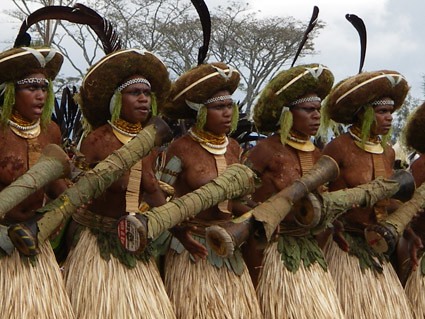
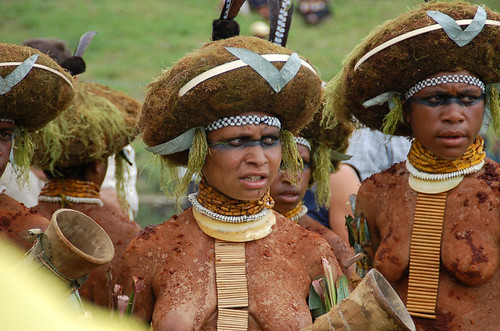
Hageners
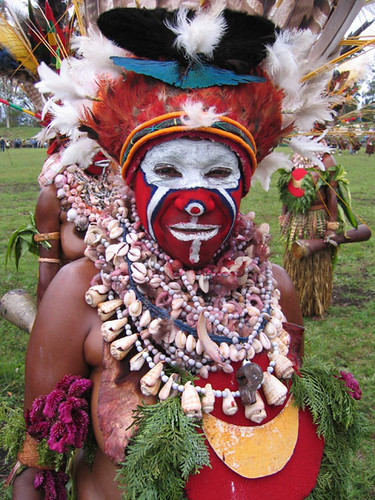
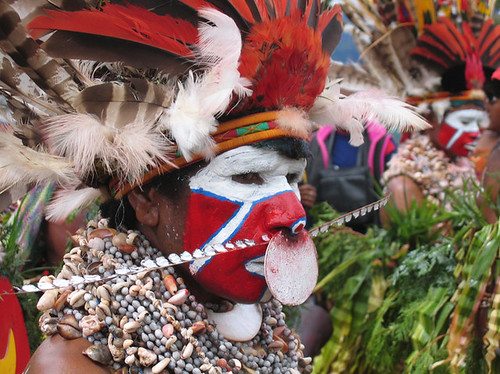
Huli boy
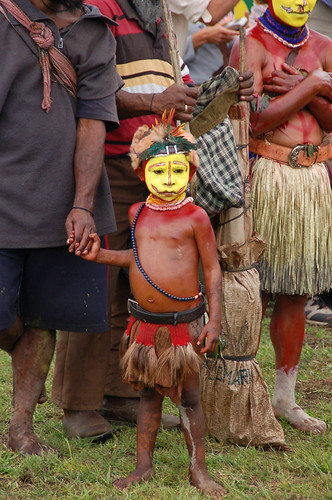
Huli Trek - the Next Generation
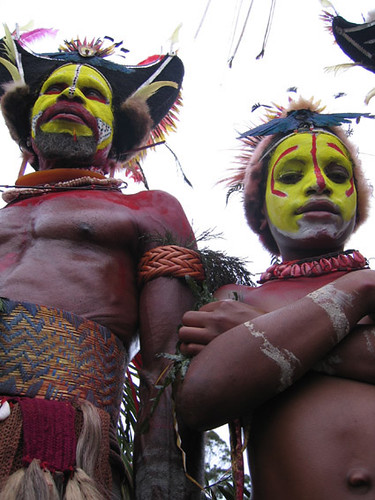
Tending to the famous Huli wigs…
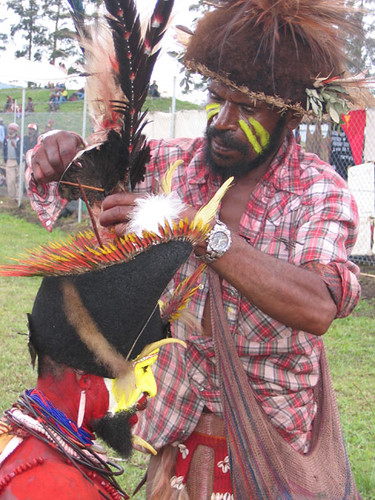
On the march
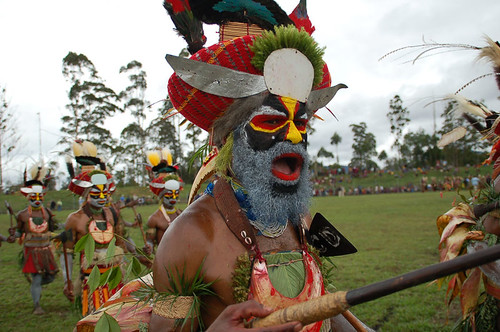
Old Chimbu Warrior
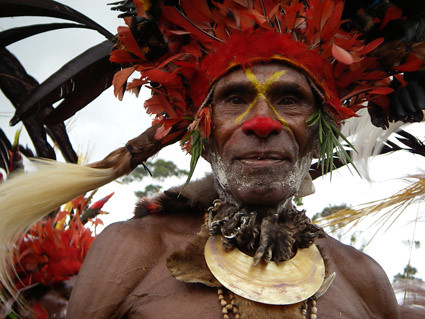
Painting up
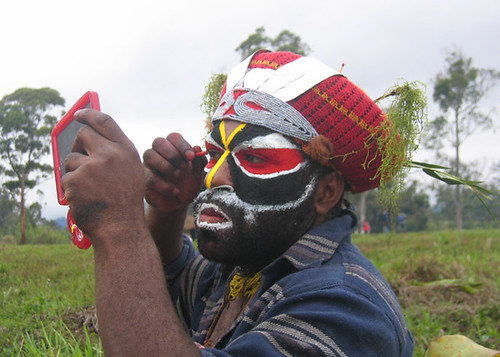
Singsing groups taking a breather (I love the guy on the left with the cigarette in his mouth)
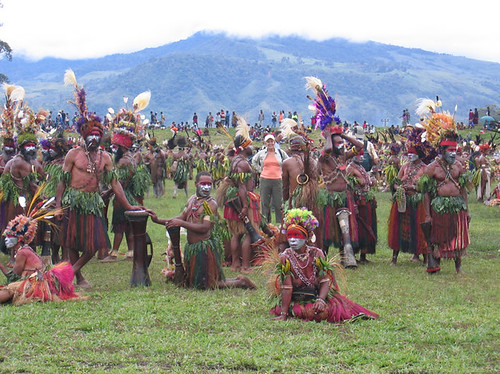
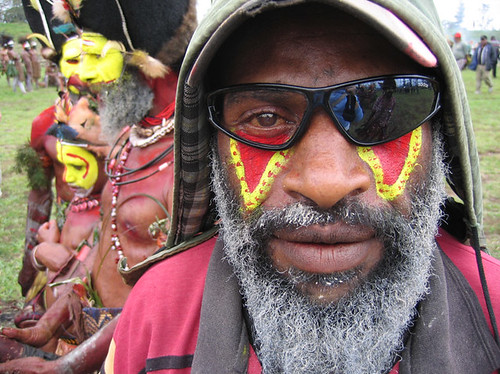
This guy was desperate for me to take his picture. Still don’t know whether the removed glass was bilas?
The tourist throng
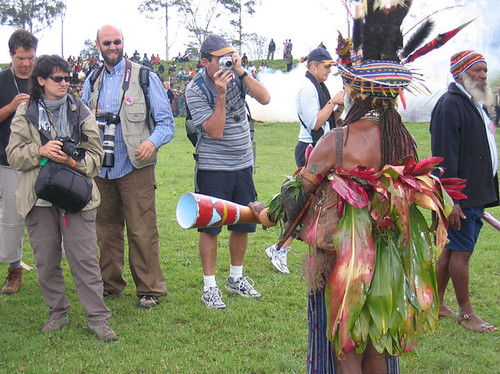
The home-time volunteer sandwich
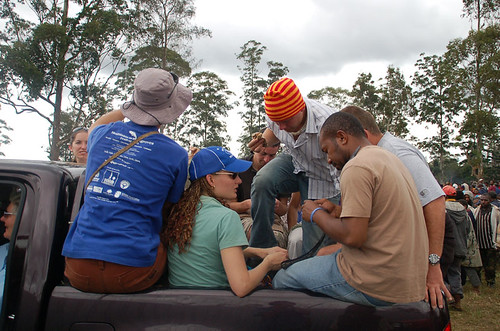

Well, it was rather remiss of me to blog about Mt Wilhelm and neglect our other major outing in August - Mt Hagen’s biggest annual event, the Hagen Show. The Wilhelm team actually started the Highland adventures up here in the Western Highlands capital, where I finally got to show some friends this is not the dangerous place it has the reputation for being. And the highlight of the Hagen stay would have to be our biggest annual cultural festival.
So before Lyn and Stan, Kate and Alex, Soli, Anthony, Camille, Hu and his parents made the trek up from their respective parts of PNG and Australia, I organised us some show tickets and prepared for the hordes to arrive. We were a pretty funny sight crammed into either mine or Dylan’s little kitchen to share dinner of an evening that weekend.
The show ran for two days – Saturday 19th and Sunday 20th August. On Saturday morning at about 9 o’clock, we jumped in the back of a couple of 4WDs and headed down to the showgrounds for some serious singsing entertainment.
A singsing is a major event in the Highlands and a traditional means of expression through dance, song and decoration (think Aboriginal corroboree). The style in which each group exhibits is individual to their clan and while it would take many visits to many parts of the country to normally see these groups in full swing, the Hagen Show brings them all together at one major oval in a fabulous outdoor spectacular. The groups take days to prepare their bilas (decorative costumes). On the day, they grease themselves up with pig fat, paint their faces up and parade around the oval in song as part of a massive competition. Prize money and prestige are the main drawcards for participants. The Huli Wigmen are particularly well known for the attention they give to their hairpieces and are the major drawcard for photographers.
It felt a bit strange for us, though. Rather exploitative. We felt very much like tourists running around with our cameras amongst the other international visitors. There were plenty of beefy looking lenses, but few photographic credentials, we suspect. And to be honest, it was pretty hard to take a picture without copping an American or a section of cyclone fencing in the background.
But we did pick up some nice souvenirs.

There were plenty of gourds (yes, Johnboy, I bought one – but not the one being modeled in the picture above) and tons of options when it came to buying musical instruments. I bought two bamboo flutes, a clay flute and a juice harp on that day alone.
So, now for some more pics...
The famous Asaro Mudmen


This young Mudman tried to sell me his little clay head

I asked him how much and he said five kina (about A$2.10). I told him in Pidgin that he should go put the price up to 30K and sell it to an American. He ran off grinning.
The Engan women
(...possibly the most beautiful of the Highland meris)


Hageners


Huli boy

Huli Trek - the Next Generation

Tending to the famous Huli wigs…

On the march

Old Chimbu Warrior

Painting up

Singsing groups taking a breather (I love the guy on the left with the cigarette in his mouth)


This guy was desperate for me to take his picture. Still don’t know whether the removed glass was bilas?
The tourist throng

The home-time volunteer sandwich

